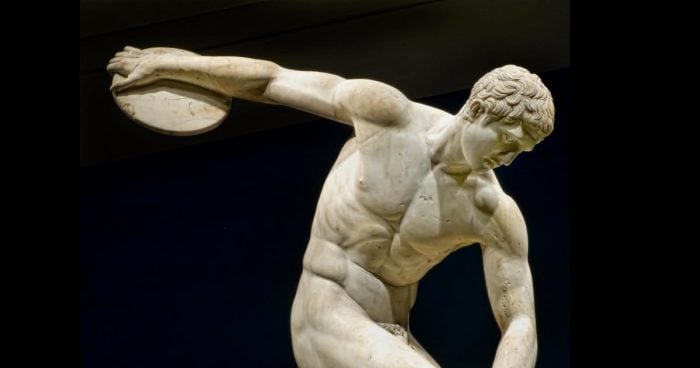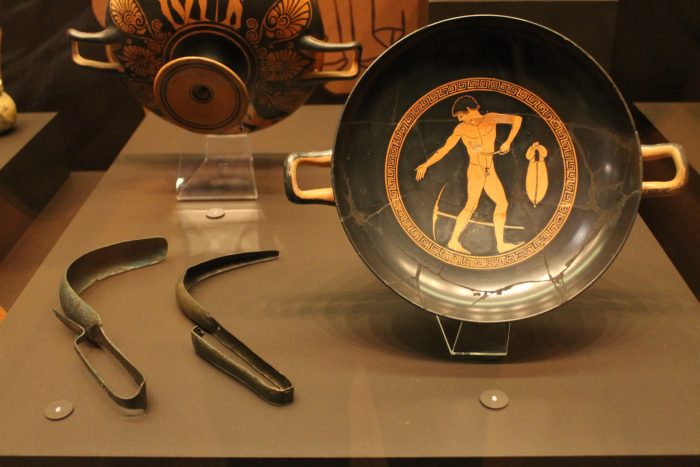
As admirers of beauty, ancient Greeks placed great emphasis on healthy skin, and they used natural substances to keep it clean and glowing.
Aphrodite, the goddess of beauty, was a prominent figure in Greek mythology while ancient Greek statues are still admired for their perfect lines and ideal depiction of the human body.
Natural cosmetics were used widely and regularly for not only one’s physical appearance but also for a healthy skin and body.
Precious oils, cosmetic powders, skin glosses, paints, and beauty unguents among other things were used in the Ancient Greek beauty regimen. Ancient Greeks made their own skincare products using natural ingredients.
Homer extensively described skincare routines as part of funerary and spiritual rituals in the Iliad.
Must-have skincare items in ancient Greece
The three main ingredients ancient Greeks used to promote healthy, attractive complexion were olive oil, honey, and yogurt. They also used fresh berries mixed with milk.
The latter was used to make face masks. The ingredients were made into a paste and applied to the face for moisturizing and anti-aging properties.
Ancient Greeks also used olives and olive oil as exfoliants and moisturizers. On top of that, olive oil made the skin look shiny and healthy while adding a bit of glowing color.
Honey, along with milk and yogurt was used as part of anti-aging preparations. Because of its antibacterial and anti-inflammatory properties, honey also helped with certain types of acne.
Greek yogurt is also a natural moisturizer which contains probiotics, proteins, vitamins, and minerals, making it great as an anti-aging mask.
Yogurt is also good for the skin, as it revitalizes dry skin and works wonders in cases of eczema.
Ancient Greek women would also use sea salt mixed with olive oil as a scrub for healthy, exfoliated skin.
The pomegranate has been a symbol of good luck, prosperity, and health since ancient times. The ancient Greeks used pomegranate juice for cleansing open pores and balancing oily skin.

The strigil in ancient Greece and Rome
The strigil was an ancient Greek and Roman tool used to scrape oil, dirt, perspiration, and other contaminants off the skin after an athlete trained.
In Rome, gladiators would use such tools after a fight. This cleaning tool was often depicted in ancient Greek amphora and kylix paintings alongside athletes.
In ancient times, athletes would rub their entire body with olive oil before athletics or training in the gymnasium or the palestra. After their workout, they would use a strigil to scrape off the oil and dirt before entering the baths to wash.
The strigil was made of metal, mostly bronze, and was shaped like the letter J with a looped handle at the top.
The curved end was broader and molded into a concave shape to scrape unwanted materials off the skin.
The body was rubbed with olive oil not only to promote healthy skin but also for aesthetic reasons.
Additionally, in wrestling, athletes would throw dust over their opponents’ oily bodies, partially to increase their grip on the otherwise slippery skin.
Following competitions, these men would scrape these substances off their bodies using a strigil, seemingly believing that a well-scraped skin is a healthy skin.
The scraped residue was sometimes collected because fans of the athletes would be willing to buy it in the belief that if they rubbed it on their own body, they would acquire the strength and bravery of the athlete.
The athlete’s or fighter’s residue was also believed to have healing properties, so it was often saved for salves.
Depictions of athletes using a strigil in amphorae and engravings were strictly of men. This particular tool was so often associated with athletes that it was sometimes also found in their tombs.
However, strigils have sometimes been found in women’s tombs, as well.
See all the latest news from Greece and the world at Greekreporter.com. Contact our newsroom to report an update or send your story, photos and videos. Follow GR on Google News and subscribe here to our daily email!



